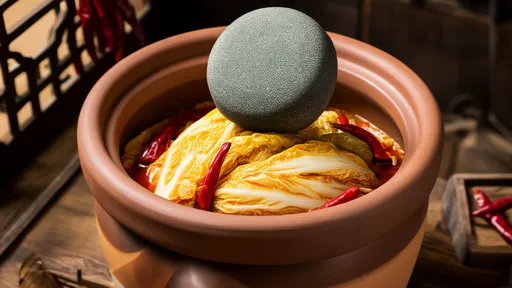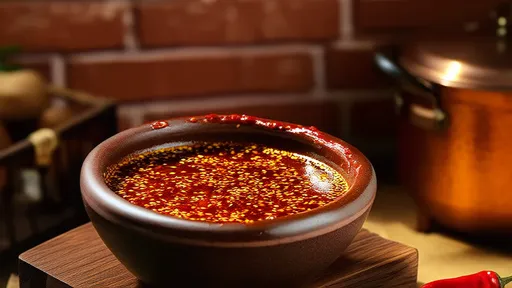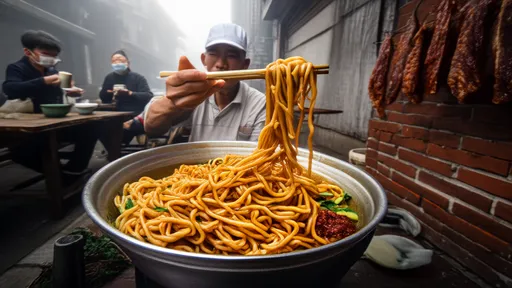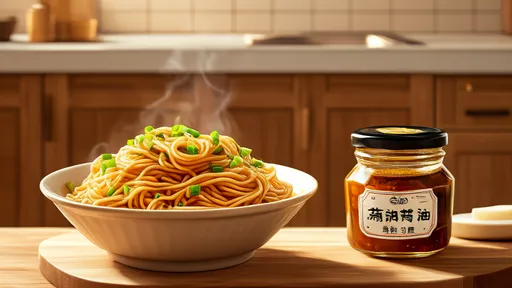The aroma of sizzling scallions in hot oil is enough to make any food lover’s mouth water. For those who crave the rich, umami-packed flavors of Chinese cuisine, mastering the art of scallion oil noodles is a game-changer. This 15-minute recipe not only delivers a quick and satisfying meal but also introduces a versatile condiment—homemade scallion oil—that can elevate dishes for weeks. With proper storage, this fragrant oil can last up to 30 days in the refrigerator, making it a staple for busy home cooks.
Scallion oil, or cong you, is a cornerstone of Shanghainese and Taiwanese cooking. Its simplicity belies its depth of flavor—slow-cooked scallions and sometimes garlic or shallots infuse neutral oil with a savory, slightly sweet essence. When tossed with noodles, it transforms humble ingredients into a dish that’s greater than the sum of its parts. The key lies in the balance: the oil must be heated enough to extract the scallions’ essence without burning them, a technique that requires attention but rewards patience.
To begin, thinly slice a generous bunch of scallions, separating the white and green parts. The whites contain more sulfury compounds, which mellow into sweetness when cooked, while the greens add fresh, grassy notes. Heat a neutral oil like peanut or vegetable oil in a wok or skillet until shimmering, then add the scallion whites. As they soften and turn golden, the greens follow, frying until crisp but not charred. Some cooks add a splash of soy sauce or sugar at this stage for complexity, though purists argue the scallions alone should shine.
The magic happens when this oil meets noodles. Fresh or dried wheat noodles, boiled until al dente, become the perfect vehicle for the infused oil. A drizzle of dark soy sauce adds color and saltiness, while a pinch of sugar rounds out the edges. Tossed together, the noodles glisten with umami-rich oil, clinging to each strand. Garnish with the crispy fried scallions, and you have a dish that’s both rustic and sophisticated—a testament to the power of pantry staples.
What makes this recipe truly ingenious is its scalability. Making a larger batch of scallion oil requires minimal extra effort but yields dividends. Stored in an airtight jar and refrigerated, the oil develops deeper flavors over time. Its uses extend far beyond noodles: stir it into rice, drizzle over steamed fish, or use it as a base for stir-fries. The fried scallion bits, stored separately, remain crisp for days, offering texture to soups and salads. This duality—quick meal and meal-prep hero—makes it a modern kitchen essential.
For time-strapped cooks, the 15-minute promise holds true, but the dish’s flexibility invites experimentation. Swap noodles for spaghetti in a pinch, or add chili flakes for heat. Vegetarians can revel in its plant-based richness, while meat lovers might top it with shredded chicken or pork belly. The scallion oil itself can be customized with ginger, star anise, or even a dash of sesame oil for complexity. Unlike fussy sauces that demand precise measurements, this recipe thrives on intuition—a forgiving entry point for novice chefs.
Beyond practicality, scallion oil noodles carry cultural resonance. In Taiwan, cong you ban mian is nostalgic street food, often served with a runny poached egg. In Shanghai, it’s a breakfast staple, eaten alongside soup dumplings. Its popularity speaks to a universal truth: great food need not be complicated. With just a few ingredients and half an hour (including oil-cooling time), this dish delivers comfort, convenience, and a touch of culinary artistry—proof that sometimes, the simplest recipes are the most enduring.

By /Jul 31, 2025

By /Jul 31, 2025

By /Jul 31, 2025

By /Jul 31, 2025

By /Jul 31, 2025

By /Jul 31, 2025

By /Jul 31, 2025

By /Jul 31, 2025

By /Jul 31, 2025

By /Jul 31, 2025

By /Jul 31, 2025

By /Jul 31, 2025

By /Jul 31, 2025

By /Jul 31, 2025

By /Jul 31, 2025

By /Jul 31, 2025

By /Jul 31, 2025

By /Jul 31, 2025

By /Jul 31, 2025

By /Jul 31, 2025